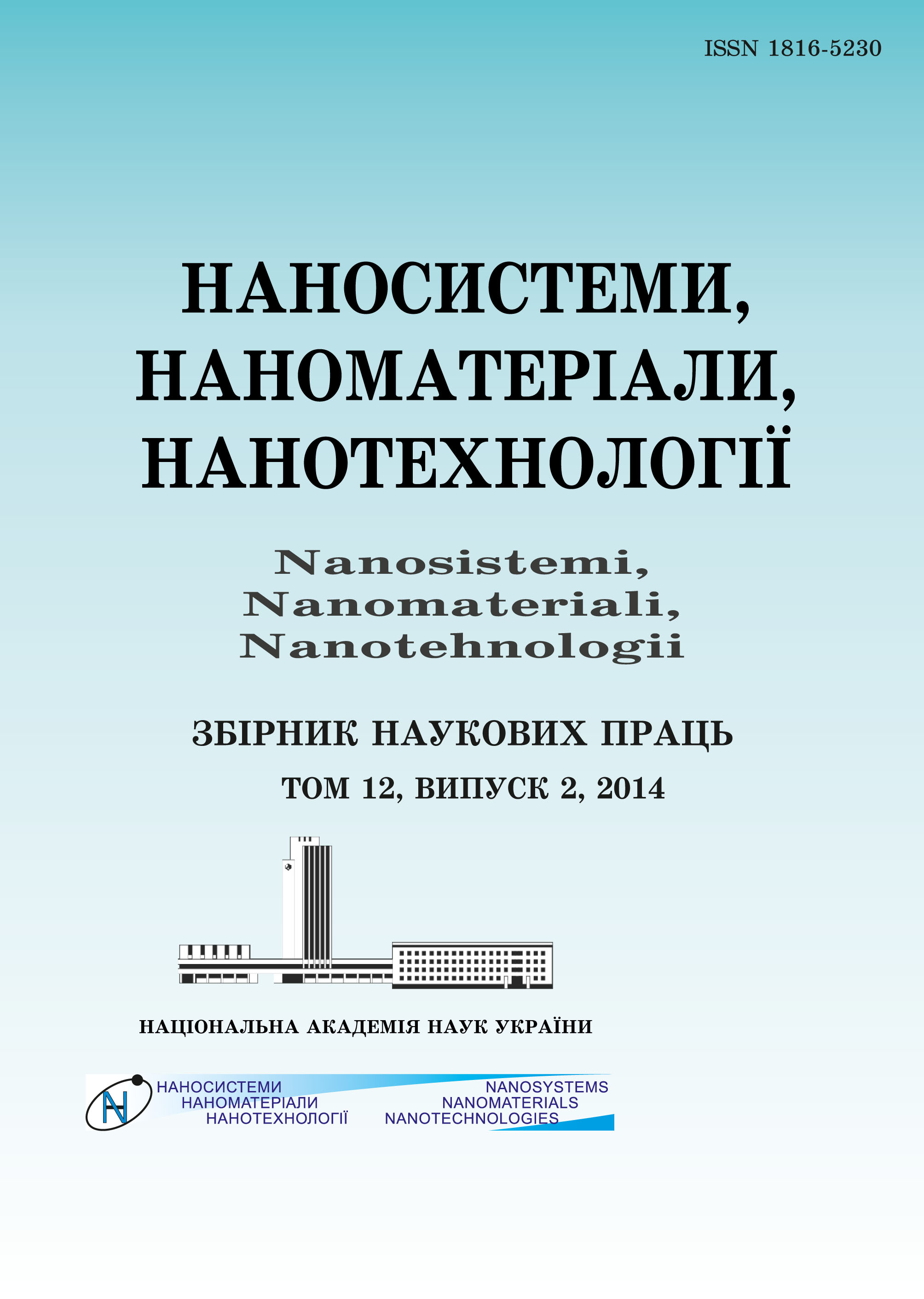|
|
|||||||||

|
Year 2024 Volume 22, Issue 3 |
|
|||||||
|
|||||||||
Issues/2024/vol. 22 /issue 3 |
|
KHALAF AJAJ, MUSHTAQ ABED AL-JUBBORI, and ABDULLAH M. ALI
Synthesis of Silver Nanoparticles via
Pulsed-Laser Ablation in Deionized Water: Characterization and Antibacterial Applications
557–568 (2024)
PACS numbers: 68.37.Hk, 68.37.Lp, 68.37.Vj, 78.67.Bf, 81.16.Mk, 87.19.xb, 87.64.Cc
In this present study, the fabrication of silver nanoparticles (NPs) is achieved through Q-switched Nd:YAG-laser ablation. A disc-shaped silver target immersed in deionized water served as the substrate for the ablation process. Varying number of pulses, specifically, 300 and 500 pulses, is used along with two laser fluences of 6.36 J/cm2 and 12.73 J/cm2. To ascertain the nanoparticles’ morphological and optical attributes, UV–Vis spectrophotometry, transmission electron microscopy (TEM) and field-emission scanning electron microscopy (FE-SEM) analyses are employed. The augmentation of absorbance spectra proportional to pulse counts indicates escalated silver-nanoparticles’ concentrations. The absorption spectra exhibit surface-plasmon resonance peaks at~400 nm, which are intensified with increasing laser pulses. An observable decrease in the optical band gap is also noted. TEM and FE-SEM analyses corroborate the existence of nearly spherical Ag nanoparticles. The analyses reveal their average diameters of approximately 34 nm and 57 nm for laser fluences of 6.36 J/cm2 and 12.73 J/cm2, respectively. Intriguingly, the inhibitory effect on Klebsiella pneumoniae and Staphylococcus aureus is more pronounced with Ag NPs generated at lower laser fluence, despite the equivalent pulse number
KEY WORDS: laser ablation, silver nanoparticles, nanoparticle size, antibacterial activity
DOI: https://doi.org/10.15407/nnn.22.03.557
REFERENCES
- J. S. Golightly and A. W. Castleman, The Journal of Physical Chemistry B, 110, Iss. 40: 19979 (2006); https://doi.org/10.1021/jp062123x
- K. S. Khashan and M. H. Mohsin, Surface Review and Letters, 22, Iss. 4: 1550055 (2015); https://doi.org/10.1142/S0218625X15500559
- A. Hamad, K. S. Khashan, and A. Hadi, Journal of Inorganic and Organometallic Polymers and Materials, 30, Iss. 12: 4811 (2020); https://doi.org/10.1007/s10904-020-01744-x
- R. P. Allaker, Journal of Dental Research, 89, Iss. 11: 1175 (2010); https://doi.org/10.1177/0022034510377794
- H. Naser, M. A. Alghoul, M. K. Hossain, N. Asim, M. F. Abdullah, M. S. Ali, F. G. Alzubi, and N. Amin, Journal of Nanoparticle Research, 21, Iss. 249: 1 (2019); https://doi.org/10.1007/s11051-019-4690-3
- S. Stroj, W. Plank, and M. Muendlein, Applied Physics A, 127, Iss. 1: 7 (2021); https://doi.org/10.1007/s00339-020-04192-z
- S. Z. Mat Isa, R. Zainon, and M. Tamal, Materials, 15, Iss. 3: 875 (2022); https://doi.org/10.3390/ma15030875
- E. Fazio, A. Scala, S. Grimato, A. Ridolfo, G. Grassi, and F. Neri, Journal of Materials Chemistry B, 3, Iss. 46: 9023 (2015); https://doi.org/10.1039/C5TB01076D
- D. Riabinina, M. Chaker, and J. Margot, Nanotechnology, 23, Iss. 13: 135603 (2012); https://doi:10.1088/0957-4484/23/13/135603
- M. Mahdieha and B. Fattahi, Applied Surface Science, 329, Iss. 1: 47 (2015); https://doi.org/10.1016/j.apsusc.2014.12.069
- G. Guill?n, V. Ibarra, I. Palma, B. Krishnan, D. Avellaneda, and S. Shaji, Chem. Phys. Chem., 18, Iss. 9: 1035 (2017); https://doi.org/10.1002/cphc.201601056
- J. Long, M. H. Eliceiri, L. Wang, Z. Vangelatos, Y. Ouyang, X. Xie, Y. Zhang, and C. P. Grigoropoulos, Optics & Laser Technology, 134: 106647 (2021); https://doi.org/10.1016/j.optlastec.2020.106647
- J. S. Kim, E. Kuk, K. N. Yu, J. H. Kim, S. J. Park, H. J. Lee, S. H. Kim, Y. K. Park, Y. H. Park, C. Y. Hwang, and Y. K. Kim, Biology and Medicine, 3, Iss. 1: 95 (2007); https://doi.org/10.1016/j.nano.2006.12.001
- J. R. Morones, J. L. Elechiguerra, A. Camacho, K. Holt, J. B. Kouri, J. T. Ram?rez, and M. J. Yacaman, Nanotechnology, 16, Iss. 10: 2346 (2005); https://doi.org/10.1088/0957-4484/16/10/059
- S. Nie and S. R. Emory, Science, 275, Iss. 5303: 1102 (1997); https://doi.org/10.1126/science.275.5303.1102
- Y. Yibin, C. Yuhua, L. Yongtao, S. Yi, and A. Xiaohui, Transboundary and Emerging Diseases, 68, Iss. 4: 2051 (2021); https://doi.org/10.1111/tbed.13852
- K. Sathyavathy and B. K. Madhusudhan, Journal of Pharmaceutical Research International, 32, Iss. 21: 12 (2020); https://doi.org/10.9734/jpri/2020/v32i2130745
- A. Tigabu and A. Getaneh, Clinical Laboratory, 67, Iss. 7: 1539 (2021); https://doi.org/10.7754/Clin.Lab.2020.200930
- G. A. Nai, D. A. L. Medina, C. A. T. Martelli, M. S. C. de Oliveira, I. D. Caldeira, B. C., Henriques, M. J. S. Portelinha, M. de Carvalho Almeida, L. K. W. Eller, F. V. de Oliveira Neto, and M. E. A. Marques, Research, Society and Development, 10, Iss. 5: e15310514701 (2021); http://dx.doi.org/10.33448/rsd-v10i5.14701
- M. Miklasi?ska-Majdanik, Antibiotics, 10, Iss. 11: 1406 (2021); https://doi.org/10.3390/antibiotics10111406
- I. Saini, J. Rozra, N. Chandak, S. Aggarwal, K. Sharma, and A. Sharma, Materials Chemistry and Physics, 139, Iss. 2–3: 802 (2013); http://dx.doi.org/10.1016/j.matchemphys.2013.02.035
- J. Tauc, R. Grigorvici, and A. Vancu, physica status solidi (b), 15, Iss. 2: 627 (1966); https://doi.org/10.1002/pssb.19660150224
 This article is licensed under the Creative Commons Attribution-NoDerivatives 4.0 International License ©2003—2024 NANOSISTEMI, NANOMATERIALI, NANOTEHNOLOGII G. V. Kurdyumov Institute for Metal Physics of the National Academy of Sciences of Ukraine. E-mail: tatar@imp.kiev.ua Phones and address of the editorial office About the collection User agreement |